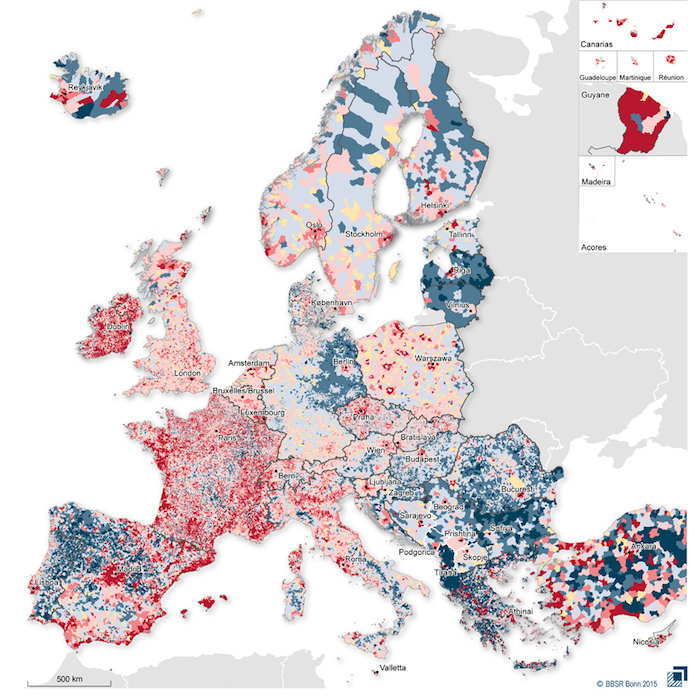This map shows the average annual change in the population of 43 European municipalities. Blue indicates that the population has fallen, red that it has risen. The intensity of the color is proportional to the intensity of the demographic change: it is more intense where the change has been superior to 2 per cent per year.
The data refer to 2001-2011 and are the most recent available. They were gathered and elaborated by researchers at the BBSR (Bundesinstitut für Bau-, Stadt- und Raumforschung), the German public organisation for land and geographic studies.
The European regions with the largest population growth are the British isles, France and Mediterranean Spain. Those where the population has decreased the most are the Balkans, the north-western Iberian peninsula and most of the countries around the Baltic sea. Trends can vary within the same country: for example, population grew fast in most of the main north-western European cities.
Was this article useful? If so we are delighted!
It is freely available because we believe that the right to free and independent information is essential for democracy. But this right is not guaranteed forever, and independence comes at a cost. We need your support in order to continue publishing independent, multilingual news for all Europeans.
Discover our subscription offers and their exclusive benefits and become a member of our community now!












